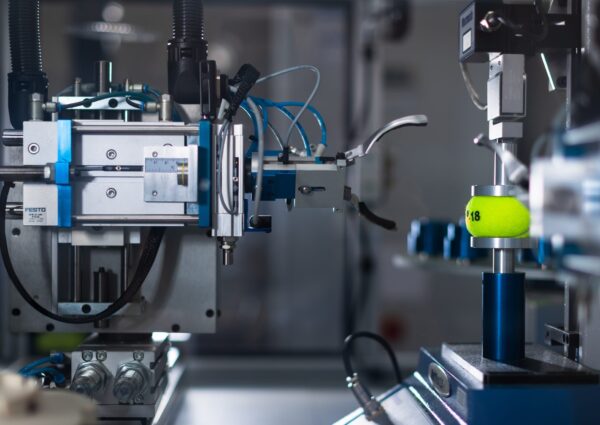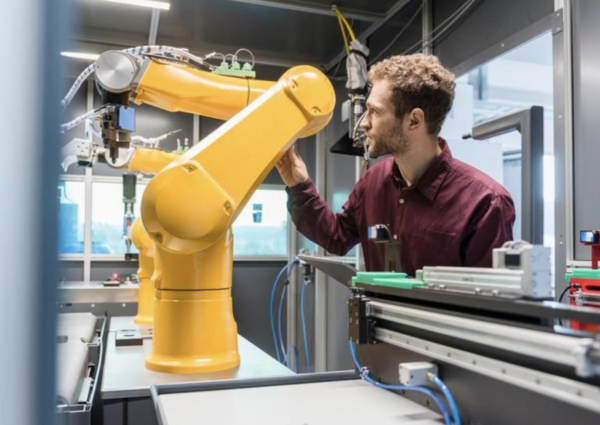Everything Old is New Again – A resurgence in Training Within Industry
Just as Training Within Industry (TWI) was crucial to workforce needs in the 1940’s, TWI is seeing a resurgence in companies across the United States to overcome a different kind of workforce shortfall. The demographics of the workforce is changing. The high turnover rates, low unemployment and the aging workforce is driving manufacturers to reevaluate how they capture institutional knowledge, skills and experience and train the next generation.
Companies have implemented Training Within Industry successfully for decades. TWI is a proven job training methodology designed to provide supervisors and team leaders with the ability to lead, instruct and improve the methods of their jobs. Given the challenges of today's skills gap, it is critical to have systematic approaches in place to train and retrain staff.
While many people believe that TWI originated in Japan, The Training Within Industry programs were originally developed in the United States. In the early 1940's, the United States government formed the Bureau of Training War Manpower Commission to help industry quickly and reliably re-train workers to ramp up for World War II.
After the war, the U.S. government exported their TWI program to Japan to try to help them rebuild their peaceful industrial base (with the goal of preventing World War III). Interestingly, while U.S. companies returned to "business as usual", Japanese companies embraced the TWI teachings in a big way.
These TWI programs have made their way around the world and are still in wide use today, most notably in Japan. Toyota adopted TWI beginning in 1951 to train their employees in the Toyota Production System. The Toyota Production System approach of going to the source, observing in detail, and learning by doing was very much influenced by TWI and became the backbone of Toyota’s standardization philosophy.
Although Training Within Industry has been around for a long time – just shy of 80 years - there are still many who have never heard of it. It has especially fallen under the radar in the United States until recent years - which is ironic, because TWI was created in the United States, by the U.S. government, and for use by U.S. manufacturers. As such, U.S. manufacturers are rediscovering TWI and the J-Programs have a new role for U.S. companies looking to implement lean manufacturing.
So What is TWI?
TWI or Training Within Industry is a Leadership Development Program designed to provide supervisors and team leaders or anyone who is in a position to direct the work of others with the ability to lead, instruct and improve the methods of their jobs and of those around them.
The original J-programs that make up TWI consist of:
- Job Instruction Training (JI) – the most popular of the J-Programs. Teaches supervisors how to quickly train employees to do a job;
- Job Methods Training (JM) - Teaches supervisors how to continuously improve the way jobs are done
- Job Relations Training (JR) - Teaches supervisors how to evaluate and take proper actions to handle and to prevent people problems.

FUN FACT: TWI Job Instruction teachings have survived to this day almost completely unchanged. The pocket card carried around today is almost identical to the original pocket card distributed by the U.S. government in the 1940's.
Overall benefits of TWI include:
- Getting more done with less equipment and manpower
- Improving quality, reducing errors by achieving standard work across workers and shifts
- Reducing safety incidents
- Decreasing training time, especially for temporary workers
- Reducing labor hours
- Reducing grievances
- Transferring of knowledge from a skilled workforce to an unskilled or green workforce
The best predictor of future success is past achievement and TWI has an incredibly long success record. Many times we are tempted to try to reinvent the wheel - especially when it comes to training our supervisors and employees. Training within Industry has proven its value to companies since the 1940’s - proven in WWII when factory workers went oversees to fight and were backfilled by housewives and others. It was proven again when General MacArthur brought TWI to Japan after the war to help rebuild their economy where at least ten million Japanese managers, supervisors and workers are graduates of the TWI programs. When you have the tools and methods available to you that have been proven in hundreds and thousands of companies – why reinvent the wheel?

Although TWI was initially created for the manufacturing sector, many organizations outside of manufacturing have begun to see its relevance as well. Since the principles taught are universal, TWI can be used in any application for which an individual is required to:
- train workers to perform a task
- build and maintain positive employee relations where people are treated as individuals yet work together as a team
- create a productive workplace environment, where jobs are performed the standard way by all operators every time
- improve the ways in which jobs are done
- ensure problem solving is embedded in daily work and structured improvement
- embrace a proven approach to sustain continuous improvement
- And last but not least - improve safety in the workplace
Although lean principles such as TWI are rooted in manufacturing, they can be applied to departments and companies of all shapes and sizes with much success. Our challenge now is how to bring new attention to this old classic.
For more information on Training Within Industry (TWI) please contact Kellie Ecker at Kellie.Ecker@USD.edu.





